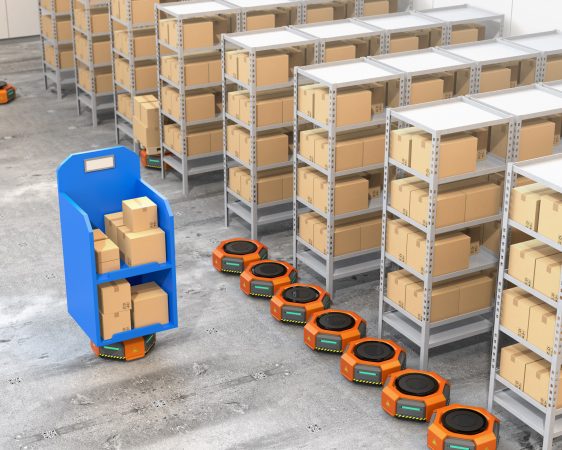
Autonomous delivery robots market to boom and top US$27B by 2025: Frost & Sullivan
by CM Staff
Automated robotic solutions such as automated storage and retrieval systems have the highest adoption rate in the industry

Autonomous Delivery Robots for the Warehouse Industry
SANTA CLARA, Calif. – Frost & Sullivan’s recent analysis, Opportunities of Autonomous Delivery Robots in Warehouse Management, finds that the global warehouse automation market is expected to nearly double its size, expanding from US$14 billion in 2019 to US$27.2 billion by 2025. The automated guided vehicles (AGV) segment is forecast to hit US$4.6 billion while the autonomous mobile robot (AMR) segment is expected to reach US$6.8 billion.
The degree to which the COVID-19 pandemic will impact the industry will vary considerably by region and by vertical sector. In developed countries such as the U.S. and China, the recovery time is going to be much faster due to their strong position with respect to technology development and adoption of warehouse automation solutions.
“The warehouse industry across the globe is experiencing transformation at a rapid pace with the increasing adoption of different types of autonomous and automated robotic solutions such as automated storage and retrieval systems (AS/RS), goods-to-person technology (G2P), automated guided vehicles (AGVs), automated guided carts (AGCs), autonomous mobile robots (AMRs), unmanned aerial vehicles, and articulated robotic arms,” said Doraiswamy Bharath Sunderraj, TechVision research analyst at Frost & Sullivan, in a prepared statement. “Further, AS/RS have the highest adoption rate because of their promising features such as increased inventory storage density, reduced labor costs, and increased inventory-picking accuracy.”
High implementation and maintenance costs, the requirement of skilled personnel for maintenance, and lack of adaptability are likely to hinder the growth of the autonomous delivery robots market.
However, increasing mergers and acquisitions in research and development (R&D) and the industry’s strong emphasis on smart automation solutions and autonomous robots will boost market expansion.
Sunderraj added: “Advancement in navigation technology is one of the prominent drivers of autonomous delivery robots. Autonomous robotic solutions using LiDAR with AI and machine learning are the currently available advanced navigational solutions.”
Vendors should focus on unlocking the following growth opportunities:
- Start-ups offering autonomous robotic solutions should mainly focus on technology development and improving brand value to compete with large OEMs.
- For technology developers, cost model planning will be crucial to gain a competitive edge among other key companies.
- Software developers should partner with technology and hardware developers to provide the required software support to their clients.
- Market players should invest in the development of the autonomy of robotic solutions, which can include enhanced navigation and obstacle detection solutions by using multiple types of sensors.